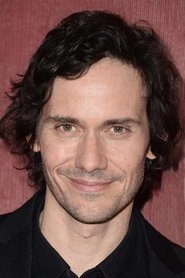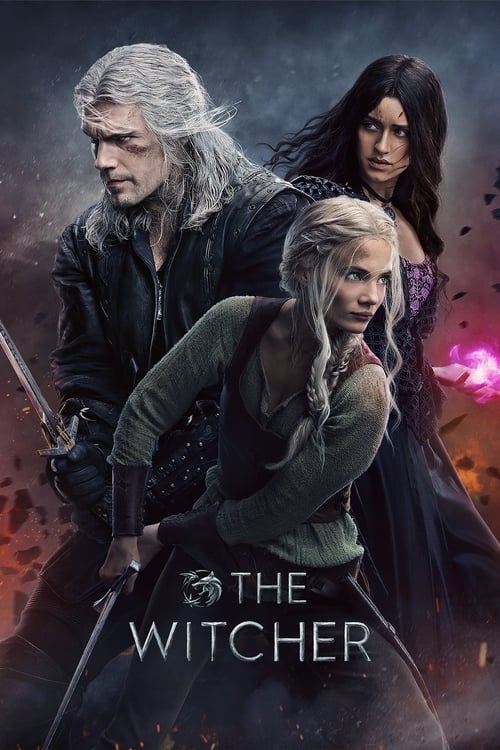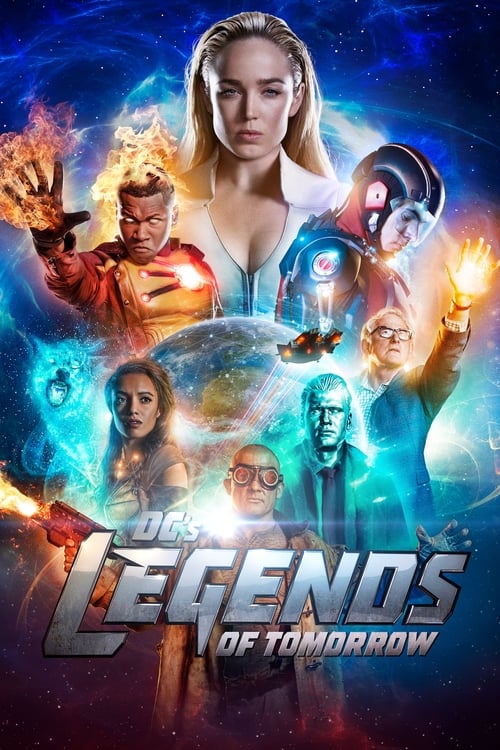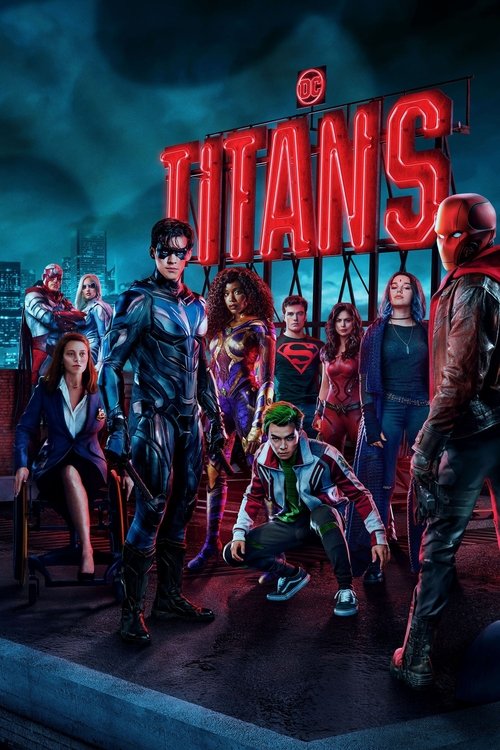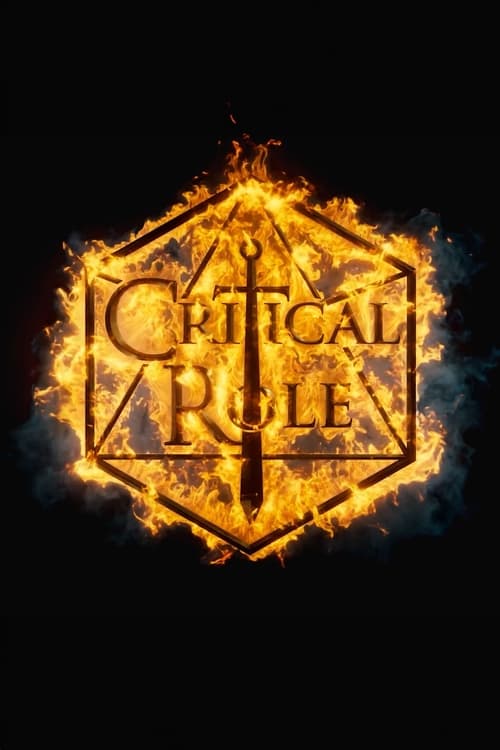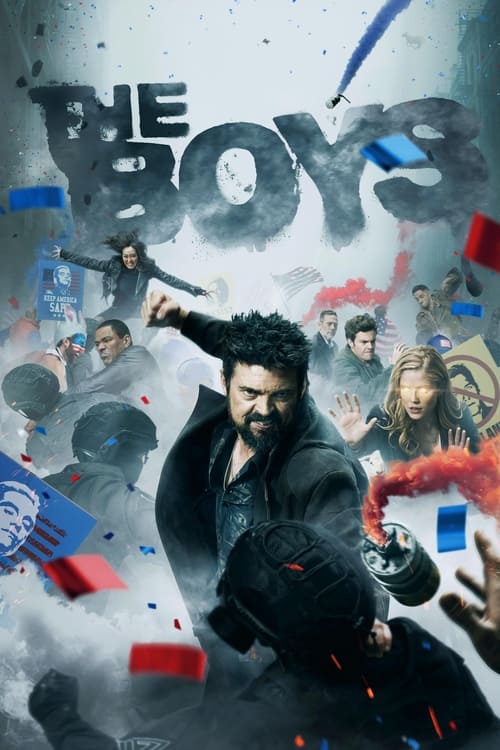
Ask Your Own Question
What is the plot?
In a distant future where humanity has lost the ability to see, the series "See" begins with the birth of twins, Haniwa and Kofun, to the warrior Baba Voss and his wife Maghra. The world is harsh and survival is a daily struggle. Baba Voss, a formidable fighter, is protective of his family, especially as the twins are born with the rare ability to see, a trait thought to be extinct. This secret is kept hidden from the outside world, as the sighted are seen as a threat.
Years later, the twins are now teenagers, and their abilities are still a closely guarded secret. Baba Voss trains them in combat and survival skills, emphasizing the importance of staying hidden. However, the peace of their secluded life is shattered when a group of witchfinders, led by the ruthless Queen Kane, learns of the twins' existence. Queen Kane, who is blind but possesses a strong belief in her own power, seeks to capture the sighted children to use them as tools to assert her dominance over the remaining tribes.
As the witchfinders approach, Baba Voss makes the decision to flee with his family. They embark on a perilous journey through the treacherous wilderness, facing various dangers, including hostile tribes and the harsh elements. During their escape, they encounter a mysterious woman named Paris, who has her own agenda and knowledge of the world before the blindness. She becomes an ally, but her true motives remain unclear.
The family eventually reaches a settlement known as the Trivantian city, where they hope to find refuge. However, they are met with suspicion and hostility from the inhabitants, who are wary of outsiders. Baba Voss must navigate the political landscape of the city while trying to protect his family. Tensions rise as the witchfinders continue their pursuit, leading to a series of confrontations.
In a pivotal moment, Haniwa and Kofun's abilities are revealed during a skirmish with the witchfinders. This revelation causes chaos, as the twins are seen as both a blessing and a curse. Baba Voss fights fiercely to protect them, showcasing his combat skills and determination. The battle escalates, and the family is forced to make a desperate escape from the city.
As they flee, they encounter a group of rebels who oppose Queen Kane's rule. The rebels are intrigued by the twins and their potential to change the balance of power. Baba Voss is torn between trusting these new allies and the need to keep his family safe. The twins, eager to understand their abilities and the world around them, begin to explore their powers more openly, which leads to further complications.
Meanwhile, Queen Kane intensifies her search for the twins, employing brutal tactics and leveraging her influence over the witchfinders. She becomes obsessed with capturing them, believing that their sight will grant her ultimate power. Her relentless pursuit creates a sense of urgency and danger that looms over the family.
In a climactic confrontation, Baba Voss and the rebels face off against Queen Kane and her forces. The battle is fierce, with both sides suffering losses. Haniwa and Kofun play crucial roles in the fight, using their sight to outmaneuver their enemies. The emotional stakes are high as Baba Voss fights not only for his family's survival but also for the future of their kind.
As the dust settles, the family is left to grapple with the consequences of their choices. They must decide whether to continue running or to stand and fight for their place in a world that fears them. The series ends on a tense note, with the threat of Queen Kane still looming, leaving the fate of the twins and their family uncertain.
What is the ending?
In the ending of "See," Baba Voss confronts his brother Edo, who has taken control of the city of Pennsa. After a fierce battle, Baba defeats Edo, but not without significant sacrifice. The fate of the children, particularly the twins Haniwa and Kofun, is pivotal as they navigate their own paths. The series concludes with a sense of hope for the future, as the characters find their places in a world that is beginning to change.
As the final episodes of "See" unfold, the tension escalates in the city of Pennsa. Baba Voss, played by Jason Momoa, is determined to protect his family and the twins, Haniwa and Kofun, from the clutches of his brother, Edo Voss, who has become a tyrant. The atmosphere is thick with anticipation as Baba prepares for the inevitable confrontation.
Scene 1: The Battle Begins The episode opens with Baba rallying his allies, including the fierce warrior Paris. The air is charged with urgency as they strategize their attack against Edo's forces. Baba's internal struggle is palpable; he is torn between his protective instincts for his family and the need to confront his brother, who has become a symbol of oppression. The camera captures the determination etched on Baba's face, revealing his deep love for his children and the weight of his responsibility.
Scene 2: The Confrontation As night falls, the scene shifts to the darkened streets of Pennsa. The clash between Baba's group and Edo's soldiers erupts in a brutal fight. The choreography of the battle is intense, with swords clashing and bodies falling. Baba fights with a ferocity that reflects his desperation to save his family. The emotional stakes are high as he encounters Edo, and their long-buried sibling rivalry comes to a head. The tension is thick as they exchange blows, each strike laden with years of resentment and pain.
Scene 3: The Final Showdown In a climactic moment, Baba and Edo face off in a dramatic showdown. The setting is stark, illuminated by the flickering flames of the chaos around them. Baba's resolve is unwavering as he fights not just for survival, but for the future of his children. The fight is brutal, showcasing Baba's strength and Edo's cunning. Ultimately, Baba gains the upper hand, and in a moment of raw emotion, he defeats Edo, but not without a heavy heart. The victory is bittersweet, as Baba realizes the cost of their conflict.
Scene 4: The Aftermath With Edo defeated, the atmosphere shifts from chaos to a tentative calm. Baba stands amidst the remnants of the battle, his body battered but his spirit unbroken. He seeks out Haniwa and Kofun, who have been navigating their own challenges throughout the conflict. Haniwa, having discovered her own strength and abilities, embraces her role as a leader, while Kofun grapples with his identity and purpose. The siblings share a moment of connection, their bond strengthened by the trials they have faced.
Scene 5: A New Dawn As the sun rises over Pennsa, the characters begin to envision a new future. Baba, now a protector and a leader, looks out over the city with a sense of hope. The final scenes depict the community coming together, rebuilding from the ashes of the conflict. Haniwa and Kofun stand beside their father, ready to face whatever challenges lie ahead. The series closes on a note of optimism, suggesting that despite the darkness they have endured, there is a path forward for them and their world.
In the end, Baba Voss emerges as a symbol of resilience, having fought for his family and their future. Haniwa and Kofun, shaped by their experiences, are poised to take on new roles in a changing world. The series concludes with a sense of renewal, emphasizing the themes of family, sacrifice, and the enduring human spirit.
Is there a post-credit scene?
The TV show "See," produced in 2019, does not feature any post-credit scenes. Each episode concludes without additional content after the credits roll. The focus remains on the narrative and character development throughout the episodes, with no extra scenes added for further storytelling or cliffhangers after the credits.
What are the abilities of the characters who are blind in the show See?
In the show 'See', the characters who are blind possess heightened senses that allow them to navigate their environment in unique ways. They rely on sound, touch, and smell to interact with their surroundings. For instance, Baba Voss, the protagonist, demonstrates exceptional hearing and physical prowess, which he uses to protect his family and community. The characters also develop a deep understanding of their environment, using echolocation-like techniques to sense obstacles and threats.
How does Baba Voss's relationship with his children evolve throughout the series?
Baba Voss's relationship with his children, particularly with his adopted daughter Kofun and biological daughter Haniwa, is central to the narrative. Initially, Baba is fiercely protective, instilling in them the importance of survival in a harsh world. As the series progresses, he grapples with the challenges of parenting in a society that views their blindness as a weakness. His emotional state shifts from a strict guardian to a more understanding and supportive figure, especially as Haniwa begins to explore her identity and powers.
What role does the character Maghra play in the story, and how does her character develop?
Maghra, Baba Voss's wife, plays a crucial role in the series as a strong and resilient character. Initially introduced as a supportive partner, her character develops significantly as she faces the challenges of motherhood and the dangers posed by rival factions. Maghra's internal struggle with her identity and her past, particularly her connection to the royal family, adds depth to her character. As the series progresses, she becomes more assertive, taking on a leadership role and fighting for her family's safety.
What is the significance of the character Jerlamarel in the plot of See?
Jerlamarel is a pivotal character in 'See', known for being one of the few individuals who can see. His existence challenges the societal norms of the blind world, and he becomes a symbol of hope and fear. Jerlamarel's ability to see makes him a target for those who wish to control or eliminate him, as his vision represents a potential threat to the established order. His interactions with Baba Voss and his family reveal deeper themes of power, fear, and the struggle for acceptance in a world that has adapted to blindness.
How does the conflict between the Payan and the Trivantian tribes impact the main characters?
The conflict between the Payan and Trivantian tribes serves as a backdrop for the personal struggles of the main characters in 'See'. This rivalry escalates tensions and forces characters like Baba Voss and Maghra to make difficult choices to protect their family. The war impacts their relationships, as alliances are tested and loyalties are questioned. The characters are often caught in the crossfire, leading to moments of intense emotional turmoil, as they navigate the dangers posed by the rival tribe while trying to maintain their values and protect their loved ones.
Is this family friendly?
"See," produced in 2019, is a dystopian drama that contains several elements that may not be considered family-friendly. Here are some potentially objectionable or upsetting aspects:
-
Violence: The show features frequent scenes of combat and physical confrontations, including sword fights and brutal killings. The violence is often graphic and intense, showcasing the harsh realities of a world where survival is paramount.
-
Death and Loss: Characters experience significant loss, including the deaths of loved ones. These moments are portrayed with emotional weight, which may be distressing for younger viewers or sensitive individuals.
-
Themes of Survival: The narrative explores dark themes related to survival, including betrayal, sacrifice, and the moral dilemmas faced by characters in a lawless society. These themes can be heavy and may provoke anxiety or discomfort.
-
Disturbing Imagery: There are scenes that depict the aftermath of violence, including injuries and the consequences of battles, which can be unsettling.
-
Mature Themes: The show delves into complex relationships, including those that involve manipulation and power struggles, which may not be suitable for younger audiences.
-
Emotional Turmoil: Characters often grapple with intense emotional struggles, including fear, despair, and hopelessness, which can be quite heavy and may resonate deeply with sensitive viewers.
Overall, while "See" offers a rich narrative and complex characters, its mature themes and graphic content may not be appropriate for children or those who are easily upset.






